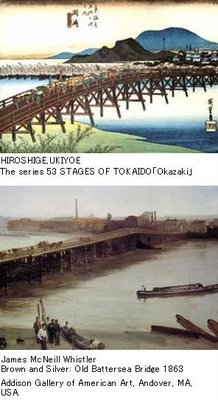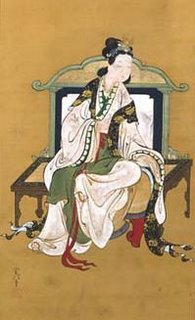Whistler & Ukiyoe ホイッスラー と 浮世絵
James McNeill Whistler Brown and Silver:Old Battersea Bridge 1863
It is as sumed that Hiroshige's 53 STAGES OF TOKAIDO"Okazaki" were imitated.
KAFKA 灰色と緑色のハーモニー JAPONIZM
スィスリー・アレクサンダー嬢(シスリー・アレクサンダー嬢)
【こんな可愛いスィスリー・アレクサンダー嬢(シスリー・アレクサンダー嬢)を、日本のお屋敷の壁を背景に描いたよう。蝶々に小菊、塗り壁に落書き。この落書きこそ、落款のようにホイッスラーがサインを書いているのです。】
RE+nessance
James McNeill Whistler JAPONIZMart⇔Interactive⇔life
肌色と緑の薄暮:バルパライソ
青と金のノクターン-オールド・バターシー・ブリッジ
黒と金色のノクターン 落ちる花火 (こちらがテートギャラリーの画像にリンク)
Magnum Photos Photographer
肌色と緑のバリエーション: バルコニー
Allegory
紫と薔薇色 六つのマークのテンゲ・ライゼン
花魁・孔雀の間 「La Princesse」/孔雀の間 リンク
「金屏風」1865年/「白のシンフォニーNo.2」(白衣の少女)








